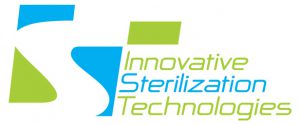For the manager of surgical services, it was a condition level deficiency – a problem deemed a danger to patients – that led to making vast system improvements that also kept hospital-acquired infections (SSIs) at bay.
“In formulating the corrective action plan, I really learned a lot,” said the manager in a recent Beyond Clean podcast. “I learned about how many things we were doing wrong and what processes I needed to put into place to stop that. I had a lot of support from people around me.”
At the time, her department was sterilizing everything on the same cycle or using immediate-use steam sterilization (IUSS ), instead of incorporating different cycles and specialized instructions, she says. That’s when the conditional level finding from an accreditation survey opened her eyes and inspired new research.
“The more we learned and the more we researched, the more we sat back and went, oh, my gosh, we’re not only out of compliance for this, but we’re out of compliance for some other things, too.” she said.
It was the very first step in a drive to get better at what they did, says the hospital’s compliance and accreditation officer.
Things started turning around for the team within 60 days of the initial deficiency finding, with a successful resurvey. A year after the initial finding, the accreditation organization closed its case.
“That’s about the time that we thought, we’re getting really good at this,” said the hospital’s director of quality and patient safety. “Somebody mentioned the sterile processing certification, and I thought we’re going to be a slam dunk for that. Let’s sign up.”
The team went on to achieve certification of its Sterile Processing program, achieving zero findings in their 2021 survey, and a data proven record of zero SSIs for more than three years.
In the U.S., on any given day, 1 in 31 hospital patients has an SSI, according to the Centers for Disease Control and Prevention (CDC). Those infections have direct medical costs of at least $28.4 billion each year. They also account for an additional $12.4 billion in costs to society from early deaths and lost productivity, the CDC says.
One of the systems that the manager is most proud of implementing is a log that tracks patients who have received care using a device processed using IUSS. She circles back with them a couple of weeks after their procedure to make sure everything is fine, just as an added layer of quality control and patient care.
“We live in a really small community,” she says. “I owe it to these people that I’m going to see at the coffee shop on Sunday to take care of them and take care of their families.”
Stay engaged on trending topics in the healthcare space and have access to articles, exciting news, and educational content by subscribing to our Blog!
If you would like FREE Online Continuing Education Credits (CE’s) visit our CE Page!
ONE TRAY® and EZ-TRAX™- Efficient, Effective, Economical
Follow us on Facebook or connect with us on LinkedIn. You can also join our ONE TRAY® Questions Page on Facebookor LinkedIn where you can ask any questions you have, any time of day, and get answers from industry experts.

